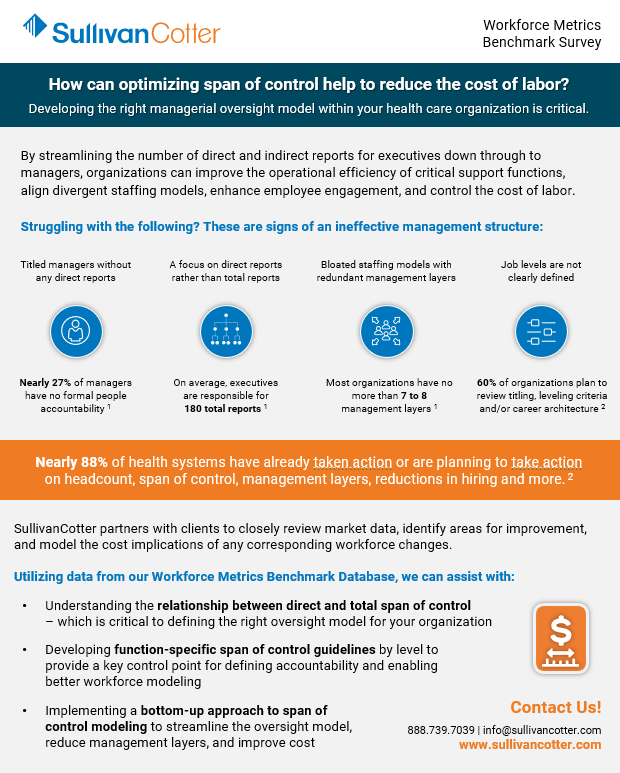Developing the right managerial oversight model within your health care organization is critical.
By streamlining the number of direct and indirect reports for executives down through to managers, organizations can improve the operational efficiency of critical support functions, align divergent staffing models, enhance employee engagement, and control the cost of labor.
Struggling with the following? These are signs of an ineffective management structure:
Titled managers without any direct reports.
A focus on direct reports rather than total reports.
Bloated staffing models with redundant management layers
Job levels are not clearly defined

Nearly 27% of managers have no formal people accountability 1

On average, executives are responsible for 180 total reports 1

Most organizations have no more than 7 to 8 management layers1

60% of organizations plan to review titling, leveling criteria and/or job architecture2
Nearly 88% of health systems have already taken action or are planning to take action on headcount, span of control, management layers, reductions in hiring and more.2
SullivanCotter partners with clients to closely review market data, identify areas for improvement, and model the cost implications of any corresponding workforce changes.
Utilizing data from our Workforce Metrics Benchmark Survey, we can assist with:
- Understanding the relationship between direct and total span of control – which is critical to defining the right oversight model for your organization
- Developing function-specific span of control guidelines by level to provide a key control point for defining accountability and enabling better workforce modeling
- Implementing a bottom-up approach to span of control modeling to streamline the oversight model, reduce management layers, and improve cost
Sources: 1. SullivanCotter Workforce Metrics Benchmark Database, 2. SullivanCotter 2024 Executive Compensation Pulse Survey
